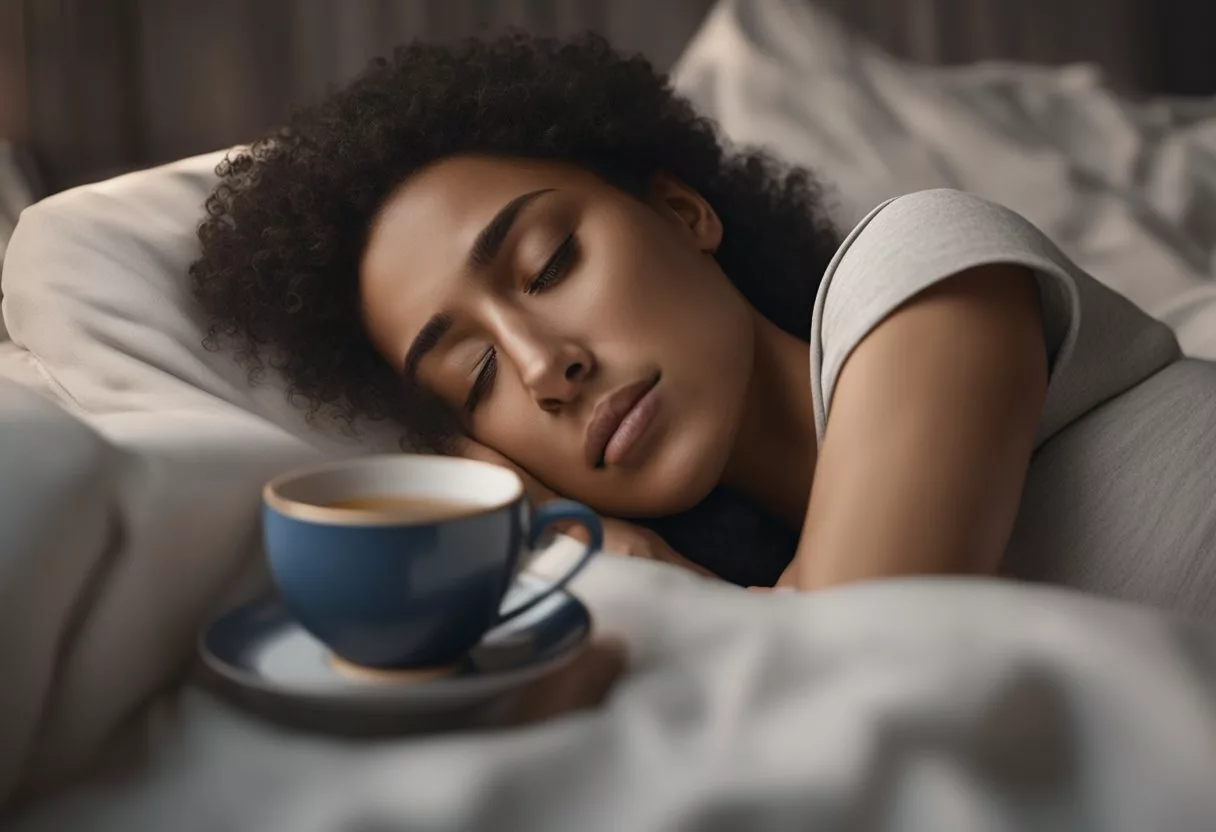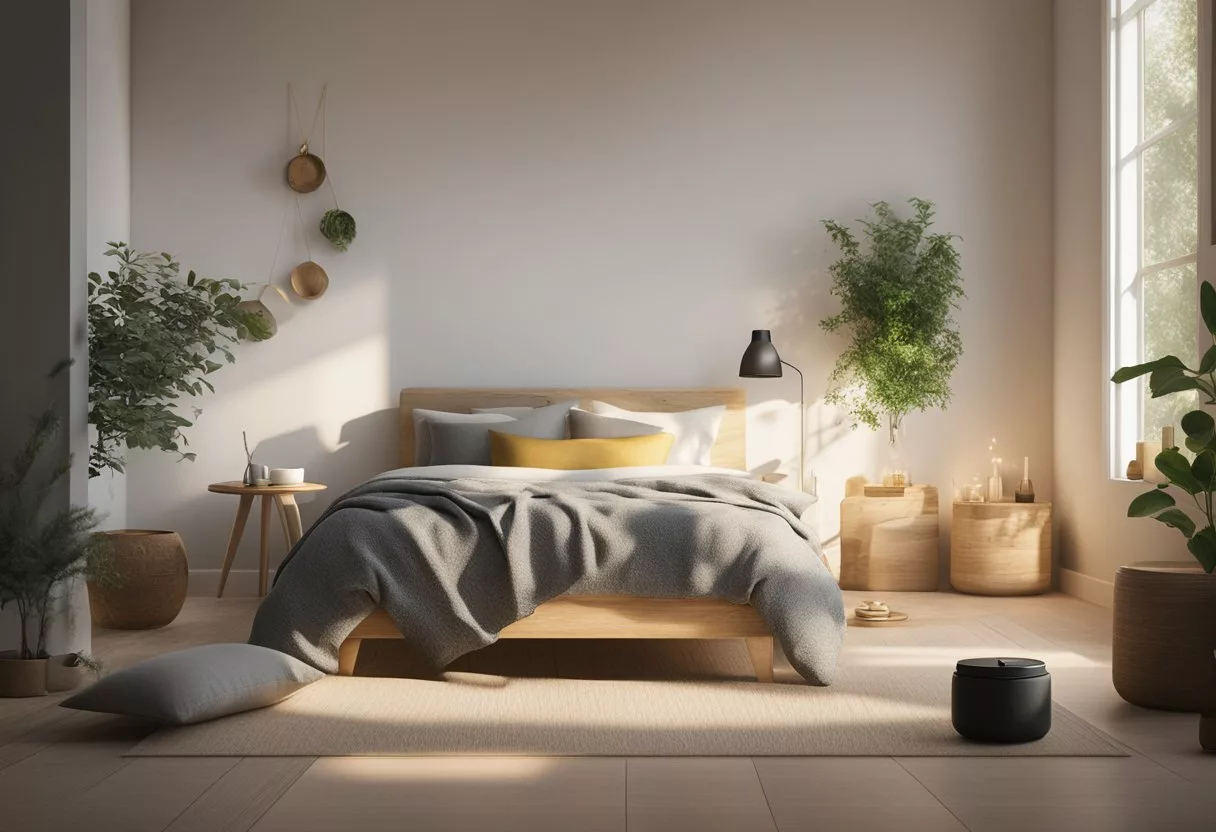Menstrual cramps are a common issue many people face during their menstruation. These cramps often cause pain in the lower abdomen, which can disrupt daily activities and affect the quality of life. Finding effective remedies can significantly ease this discomfort and help manage period pain.
There are various treatments available ranging from over-the-counter pain relievers to natural and home remedies. Pain relievers like ibuprofen can help reduce menstrual cramps by lowering prostaglandin levels, which cause the pain. In addition, simple lifestyle changes like regular exercise can boost endorphins and alleviate period pain.
Natural remedies such as using essential oils for a tummy massage or including foods rich in manganese like nuts and seeds in your diet can also be beneficial. Combining these methods can provide comprehensive relief and improve your overall well-being during menstruation.
Key Takeaways
- Effective remedies can ease menstrual cramps and improve quality of life.
- Pain relievers, exercise, and dietary changes are helpful treatments.
- Essential oils and natural foods offer additional relief.
Understanding Menstrual Cramps

Menstrual cramps can be a significant concern for many women. This section explores why cramps occur, distinguishes between types of dysmenorrhea, and delves into the physiological process of menstruation.
Causes of Menstrual Cramps
Menstrual cramps, also known as dysmenorrhea, typically arise from the contraction of the uterus. The main trigger for these contractions is the release of prostaglandins. High levels of prostaglandins can cause intense contractions, leading to severe pain.
Conditions like endometriosis, fibroids, adenomyosis, and pelvic inflammatory disease can also contribute to menstrual cramps. For instance, endometriosis involves tissue similar to the uterine lining growing outside the uterus, which can cause severe pain. Fibroids are noncancerous growths in the uterus that can lead to increased cramping.
Types of Dysmenorrhea
Dysmenorrhea can be classified into two types: Primary and Secondary.
Primary Dysmenorrhea refers to common menstrual cramps not associated with other diseases. It usually begins 1-3 days before menstruation and decreases with age or after childbirth.
Secondary Dysmenorrhea is pain caused by a disorder in the reproductive organs. Conditions like endometriosis, fibroids, or adenomyosis often lead to secondary dysmenorrhea. This type of pain may start earlier in the menstrual cycle and last longer than primary dysmenorrhea.
Physiology of Menstruation
Menstruation is the shedding of the uterine lining, known as endometrium. This process is regulated by hormonal changes in the body. At the start of the menstrual cycle, estrogen levels rise, thickening the uterine lining to prepare for a possible pregnancy.
If no pregnancy occurs, prostaglandins are released, causing the uterus to contract and shed its lining. These contractions result in menstrual blood loss and the pain known as menstrual cramps. Conditions like adenomyosis, where the endometrial tissue grows into the muscle wall of the uterus, can intensify these contractions and the associated pain.
Understanding these aspects can help to manage and potentially alleviate menstrual cramps more effectively.
Medical Treatments
For those experiencing severe menstrual cramps, various medical treatments can provide relief. Options range from over-the-counter medications to prescriptions, and consulting a gynecologist might be necessary for persistent pain.
Nonsteroidal Anti-Inflammatory Drugs (NSAIDs)
NSAIDs are commonly used to relieve menstrual cramps. Ibuprofen (Advil) and naproxen (Aleve) are two popular options. These medications work by reducing the production of prostaglandins, which are chemicals that cause inflammation and pain in the uterus.
Taking NSAIDs at the onset of cramps can be quite effective. It is crucial to follow the recommended dosage on the packaging or as advised by a healthcare professional to avoid side effects. NSAIDs are generally well-tolerated but might cause stomach upset in some individuals.
Prescription Medications
For those who find over-the-counter options insufficient, prescription medications might be necessary. These medications can include stronger NSAIDs or other types of pain relievers. In some cases, hormonal birth control methods such as pills, patches, or intrauterine devices (IUDs) can also be prescribed to help manage menstrual pain.
Hormonal treatments work by suppressing ovulation and stabilizing hormone levels, which can reduce the severity of cramps. A healthcare provider can help determine the most appropriate treatment based on individual symptoms and medical history.
Consulting a Gynecologist
If menstrual cramps are severe and do not improve with over-the-counter medications, it may be time to consult a gynecologist. A gynecologist can perform a thorough evaluation to rule out conditions like endometriosis or fibroids, which can cause significant pain.
During the consultation, the gynecologist might recommend specific treatments or adjustments to current medications. They can also offer advice on lifestyle changes and offer additional medical interventions if necessary. It’s important to seek professional help to ensure that underlying issues are addressed and managed properly.
Natural and Home Remedies

For those experiencing menstrual cramps, various natural and home remedies can bring relief. These include heat therapy, dietary adjustments, herbal remedies, and physical relaxation techniques.
Heat Therapy
Applying heat to the abdomen can soothe menstrual cramps effectively. Using a heating pad or a hot water bottle helps relax the uterine muscles and reduce pain. A warm bath can also provide relief by easing muscle tension.
Another method involves electric heating pads, which offer consistent heat levels. Heat patches are also convenient for on-the-go relief. These methods can help alleviate pain linked to cramps and are easy to use at home.
Dietary Adjustments
Certain dietary changes can ease menstrual cramps. Eating foods high in fiber like fruits and vegetables helps reduce inflammation, which can lower pain levels. Papayas are rich in vitamins and nutrients that support uterine health.
Hydrating is crucial, as water helps reduce bloating and discomfort. Adding nuts like almonds to one’s diet provides magnesium, which can ease muscle cramps. Limiting processed foods and caffeine may also improve symptoms.
Herbal Remedies
Many herbs can help reduce menstrual cramp pain. Ginger is known for its anti-inflammatory properties and can be consumed as tea. Fennel seeds also help, as they have muscle-relaxing qualities.
Herbs like chamomile and peppermint are often used in teas to help with relaxation and pain relief. These herbal remedies are simple to prepare and can be effective in soothing menstrual pain naturally.
Physical Relaxation Techniques
Physical relaxation techniques such as yoga and acupressure can help manage menstrual pain. Yoga poses that focus on stretching and relaxation can ease muscle tension and improve blood flow.
Acupuncture is another method that may provide relief by targeting specific pressure points. Regular exercise, even short walks, can boost endorphins, which are natural painkillers. These techniques promote overall well-being and help alleviate menstrual discomfort.
Lifestyle and Management

Regular exercise, effective stress management, and ensuring quality sleep can significantly alleviate menstrual cramps and improve overall well-being. Focusing on these areas can help manage pain and discomfort associated with menstruation.
Exercise and Physical Activity
Engaging in regular physical activity can reduce the severity of menstrual cramps. Light activities such as walking and yoga help release endorphins, which are natural painkillers. Studies suggest that low-intensity stretching exercises can also be effective. It’s beneficial to aim for at least 30 minutes of moderate exercise most days of the week.
Yoga poses, such as child’s pose and cat-cow stretch, specifically target the lower abdomen and back, easing cramp pain. Even short sessions of exercise can enhance blood circulation and reduce muscle tension.
Stress Management
Managing stress is crucial in reducing menstrual cramp intensity. Practicing relaxation techniques like deep breathing, meditation, and mindfulness can lower stress levels. Stress can worsen cramps by increasing muscle tension and inflammation.
Integrating activities such as yoga or tai chi into daily routines can help manage stress. Massage therapy using essential oils like lavender or peppermint may also provide relief by reducing muscle tightness and promoting relaxation. Maintaining a balanced diet and staying hydrated supports overall stress levels and menstrual health.
Quality Sleep and Rest
Quality sleep and adequate rest are essential for minimizing menstrual cramps. Sleep helps the body repair and manage pain more effectively. Aim for 7-9 hours of sleep each night to maintain overall health and reduce cramp severity.
Creating a calming bedtime routine can make it easier to fall asleep and stay asleep. This might include limiting screen time before bed, maintaining a regular sleep schedule, and creating a comfortable sleeping environment. Using heat therapy such as a heating pad before bed can also help relax abdominal muscles and alleviate cramps.
Supplementary Treatments

Several additional treatments can help ease menstrual cramps, such as vitamin and mineral supplements, hydrotherapy techniques, and complementary therapies like massage and essential oils.
Vitamin and Mineral Supplementation
Taking certain vitamins and minerals can reduce menstrual cramp pain. Vitamin B1 (thiamin) and vitamin B6 are known to alleviate symptoms. Magnesium is another essential mineral that helps relax muscles and can decrease the severity of cramps.
Studies suggest that omega-3 fatty acids also help by reducing inflammation. These nutrients can be found in supplements or naturally through a balanced diet. A healthcare provider should be consulted before starting any new supplement regime to ensure safety and appropriateness.
Hydrotherapy
Hydrotherapy involves the use of hot water to alleviate muscle pain. Soaking in a hot bath or using a hot water bottle on the lower abdomen can be particularly effective. Heat increases blood flow and relaxes the muscles, thereby reducing cramps.
Heating pads and heat patches are portable options that can provide continuous warmth throughout the day. This method is easy to apply and has little to no side effects, making it a popular choice.
Complementary Therapies
Essential oils such as lavender, clary sage, and marjoram can be beneficial when used in a light abdomen massage. These oils possess properties that can relieve pain and improve relaxation.
Another effective method is transcutaneous electrical nerve stimulation (TENS), which uses electric currents to reduce pain signals. It’s a non-invasive approach that can provide significant relief. Combined, these therapies offer holistic options for managing discomforts brought by menstrual cramps.
Frequently Asked Questions
Menstrual cramps can be managed through a variety of methods including home remedies, medications, and lifestyle changes. Understanding these options can help women find the best way to alleviate pain effectively.
What home remedies can provide immediate relief for period cramps?
Applying heat is one common method. A heating pad or hot water bottle on the lower abdomen can relax muscles and reduce pain.
Drinking herbal teas like chamomile or ginger tea can also have soothing effects.
What are the most effective pain relief medications for menstrual cramps?
Over-the-counter NSAIDs, such as Advil or Aleve, are often effective at reducing menstrual pain. These medications work by lowering the production of prostaglandins, the hormones that cause cramps.
How can period pain be alleviated for long-term comfort?
Regular exercise can help manage cramps in the long term by boosting endorphins, which are natural pain relievers. Practicing yoga and stretching exercises also promotes blood flow and reduces tension.
Taking dietary supplements like vitamin E, omega-3 fatty acids, and magnesium can further ease cramps.
What are the ways to manage severe period pain that seems unbearable?
If pain is severe, a doctor might prescribe stronger pain medications. Hormonal treatments like birth control pills can also regulate menstrual cycles and reduce the severity of cramps.
In severe cases, medical procedures such as laparoscopic surgery may be considered for underlying conditions like endometriosis.
What natural methods are recommended for teenage menstrual cramp relief?
For teenagers, moderate exercise such as walking or swimming can decrease cramps.
A warm bath or essential oils massage on the abdomen can also help. Additionally, relaxation techniques like deep breathing and meditation can reduce stress and discomfort.
Which foods are known to reduce the discomfort of period cramps?
Foods rich in omega-3 fatty acids, like fish, can lessen inflammation. Fruits and vegetables, particularly those high in water content, can help keep the body hydrated.
Consuming nuts and seeds that are high in magnesium can also relieve pain (Mayo Clinic[1]).
References
- Menstrual cramps - Diagnosis & treatment. https://www.mayoclinic.org/diseases-conditions/menstrual-cramps/diagnosis-treatment/drc-20374944 Accessed November 2, 2025
